
Troy A Swanson
Born: 1976 in Cambridge, IL
Pen Name: None Connection to Illinois: Swanson was born in Kewanee and grew up in Cambridge. He attended Augustana College in Rock Island as an undergraduate and finished by Master's Degree at Dominican University in River Forest. Biography: Troy A. Swanson is Teaching & Learning Librarian and Library Department Chair at Moraine Valley Community College. Troy is the author or editor of several books and articles including co-editor of Not Just Where to Click: Teaching Students How to Think About Information which received the Ilene F. Rockman Publication of the Year Award from ARCL’s Instruction Section. His Ph.D. dissertation focused on the management of technology policy in higher education. He served on ACRL’s Information Literacy Competency Standards for Higher Education Task Force which issued the Framework for Information Literacy. Over his tenure as a librarian and educator, Troy has won his campus's Master Teacher and Innovation of the Year awards, as well as the Proquest Innovation in College Librarianship award from ACRL.
Awards:
LinkedIn: https://www.linkedin.com/in/troy-swanson-31746722b
Selected Titles
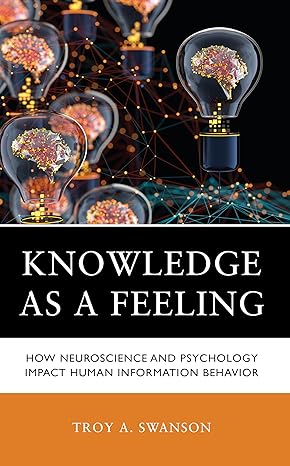 |
Knowledge as a Feeling: How Neuroscience and Psychology Impact Human Information Behavior ISBN: 1538178923 OCLC: Rowman & Littlefield Publishers 2023 Much of information science theory assumes a type of rationality in how individuals process the world around them but the impact of misinformation and disinformation along with the polarization of society into competing information factions calls for new understandings around our relationships to information. Advances in neuroscience and psychology shed new light on how the brain processes information using both conscious and unconscious systems. Current theory in neuroscience emphasizes that the mind is not a unified whole but a network of networks constructing reality to anticipate needs. Knowledge is not a rational process but centers around the feeling of knowing which is the net output of competing brain processes. The feeling of knowing assumes a group context and offers a social epistemological stance that judges knowledge within this group context. With knowledge built into groups, power dynamics allow work to be accomplished but also privilege some group members over others. The feeling of knowing has significant implications for information science challenging theoreticians and practitioners to reconsider how individuals process information. For information behavior, the feeling of knowing offers a fuller picture looking at conscious and unconscious processing in the production of knowledge. For information literacy, the feeling of knowing sheds light on how individuals evaluate information and synthesize new sources into their existing knowledge. Ultimately, the feeling of knowing leads us toward new reflective and metacognitive tools that help meet this moment in the evolution of our information ecosystem. This book explores the idea that knowing is a feeling that results from the interactions of the brain’s unconscious and conscious processes and not through the accumulation of facts. It's intended to help librarians, educators, and information scientists better understand what neuroscience and psychology are teaching about what it means to know and how our brain learns. |
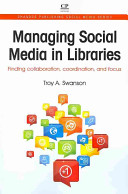 |
Managing Social Media in Libraries: Finding Collaboration, Coordination, and Focus ISBN: 1843347113 OCLC: 851643751 Chandos Pub., Oxford : 2012. Web 2.0 first created a scramble among librarians to participate in Facebook, YouTube, blogs, and other social media applications, and the turn is now towards management and consolidation. Managing Social Media in Libraries explores the developing information environment, the collaboration among library organizations, and the ways social media may convert the loose connections between library staff members. The book takes librarians beyond the mechanics of using social media, and establishes a framework to move library managers and leaders toward making social media effective. Managing Social Media in Libraries is structured around key topics in this area, including: refocusing after the first use of Web 2.0; library organisations as loosely coupled systems; social media within such systems; defining a purpose for the use of social media; connecting messages and tools; and integrating social media into standard websites.Provides practical ways of thinking about social media for library managers and leadersProvides examples of policies, workflows, and uses of social media tools for library managers and leadersDefines organizations as coordinated systems and discusses how social media tools can emphasize the benefits of coordination |
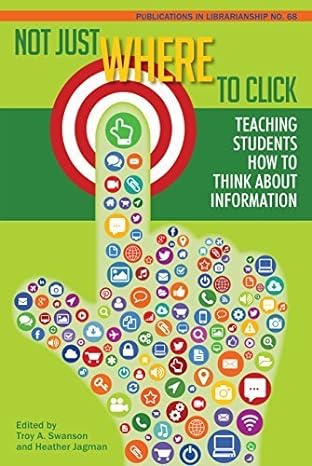 |
Not Just Where To Click: Teaching Students How to Think About Information ISBN: B01181L0C6 OCLC: American Library Association 2015 "Not Just Where to Click: Teaching Students How to Think about Information" explores how librarians and faculty work together to teach students about the nature of expertise, authority, and credibility. It provides practical approaches for motivating students to explore their beliefs, biases, and ways of interpreting the world. This book also includes chapters that bridge the gap between the epistemological stances and threshold concepts held by librarians and faculty, and those held by students, focusing on pedagogies that challenge students to evaluate authority, connect to prior knowledge and construct new knowledge in a world of information abundance. Authors draw from a deep pool of perspectives including social psychology, critical theory, and various philosophical traditions. Contributors to the nineteen chapters in this volume offer a balance of theoretical and applied approaches to teaching information literacy, supplying readers with accessible and innovative ideas ready to be put into practice. "Not Just Where to Click" is appropriate for all types of academic libraries, and is also suitable for library and information science curricula and collections. |
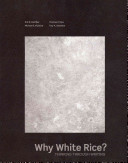 |
Why White Rice?: Thinking Through Writing ISBN: 0757582028 OCLC: 778446002 Kendall Hunt Pub., Dubuque, IA : ©2010. When we write, we also engage in conversations with other writers. The writers are expressing ideas, sharing opinions, working through problems, agreeing, and disagreeing. The writers of Why White Rice? embrace this idea fully but also move past just saying it: they demonstrate it through a book that is a conversation on writing---distinct and honest voices contending with one another, responding to each other, and working through problems. This book on writing comes from four community college teachers with different backgrounds and training (with contributions from students, as well) in a collection of voices that speaks directly to students and writers. It drops the pretense of traditional textbooks and talks honestly with students in a way that has them reading and responding in some surprising ways. Reading this book is like sitting down with that teacher who cared enough to tell it to you straight---to be honest with you. Even if it stung a little, you knew she was right and you listened. About the Authors The book features four authors---all community college teachers, all writers, but each with different training and backgrounds. Eric DeVillez holds an MFA in creative writing from Roosevelt University, Tom Dow has a PhD in literature from Loyola University, Michael McGuire holds an MA in rhetoric and composition from Northeastern Illinois University, and Troy Swanson holds a PhD in community college leadership from Old Dominion University and holds a Masters of Library and Information Science from Dominican University. This blend of academic training and experience brings very different (and often competing) perspectives on writing, which adds to the lively conversation of the book itself. Pedagogy The book teaches by example. It models effective writing in a variety of ways while addressing the subject of writing itself. It models writing and research, quite literally, through a conversation of ideas. The text also features chapter summaries, focus boxes to highlight key points, and a comprehensive index to make it easy for readers to locate typical (and less typical) topics in writing as they are addressed throughout the conversation of the text. The book can be read in sequence from beginning to end, by chapter (in any order), or by writing topic as located through the table of contents and index. The brief response pieces are quite effective for classroom teaching as they seem to predict many questions, comments, and challenges raised by students. These response pieces are short enough to read in the classroom and offer a springboard to rich conversation. |


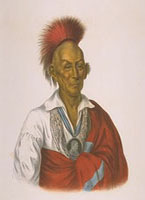
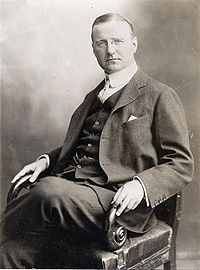
.jpg)